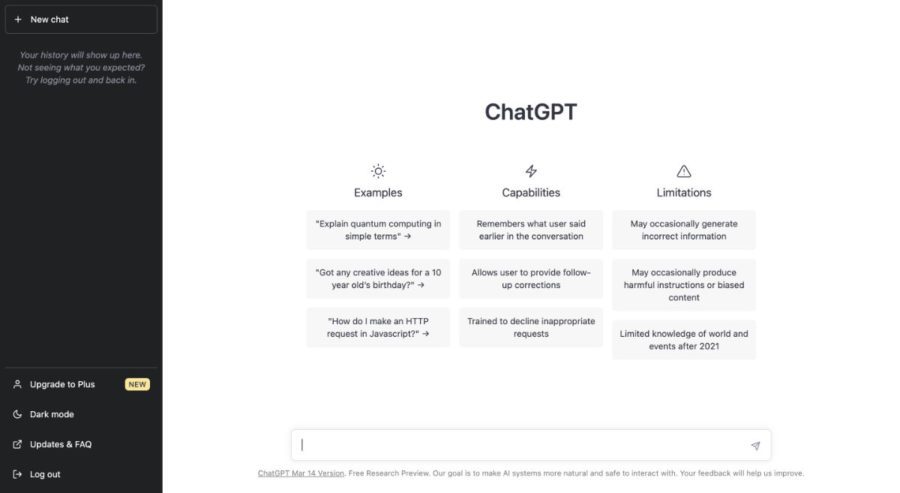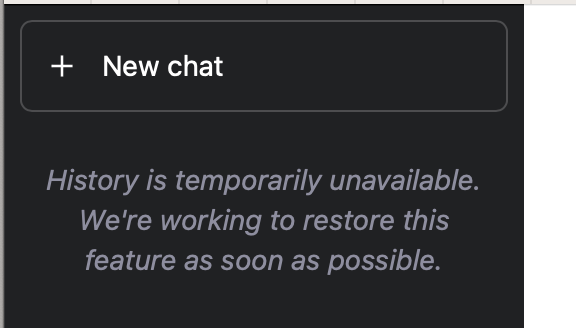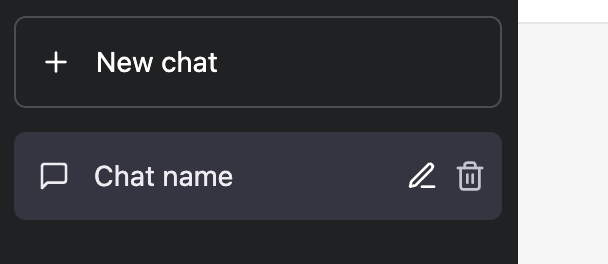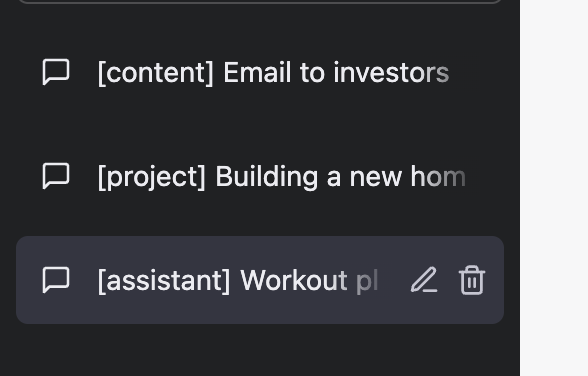This comprehensive blog provides in-depth coverage of ChatGPT and is designed to increase your results by 10x. We understand that it may be lengthy, so feel free to jump to relevant sections using the links provided below.
Getting started with ChatGPT: sign up for a free account and begin exploring
Get to know ChatGPT: understanding the basics
Housekeeping with ChatGPT: maintaining a smooth AI experience
Preparing ChatGPT: Setting the stage for optimal performance
Crafting effective prompts: the art of communication
Practical applications: how to leverage ChatGPT
Continuously improve and iterate
Monitoring and analyzing ChatGPT performance
Staying informed: follow AI developments and community insights
As AI-powered conversations continue to gain traction, understanding how to harness the full potential of ChatGPT is crucial for businesses and individuals alike. In this comprehensive guide, we will walk you through the essential steps to maximize the potential of ChatGPT, with detailed instructions and practical tips. Discover the best ways to optimize your AI conversations and achieve outstanding results.
1. Getting started with ChatGPT: sign up for a free account and begin exploring
If you’re new to ChatGPT and eager to get started, follow these simple steps to sign up for a free account and begin exploring its capabilities:
Sign up for a free Account
Many ChatGPT providers offer free trial accounts or limited access to their services. To sign up for a free account:
- Visit the provider’s website, such as OpenAI or a similar platform offering ChatGPT services.
- Locate the “Sign Up” or “Get Started” button and click on it.
- Fill out the required information, such as your name, email address, and desired password. Some providers may also ask for additional information or require email verification.
- Agree to the terms of service and privacy policy, and complete the registration process.
Once you have successfully created your account, you’ll be able to access the ChatGPT platform and start exploring its features.
Familiarize yourself with the platform
Take some time to familiarize yourself with the platform’s interface, settings, and features. This may include:
- Navigating the dashboard and understanding its layout.
- Accessing documentation and tutorials provided by the platform.
- Exploring available settings.

2. Get to know ChatGPT: understanding the basics
Before diving into the advanced techniques, it’s essential to grasp the fundamentals of ChatGPT, its features, and its limitations. Familiarizing yourself with the architecture and core capabilities will give you a solid foundation for making the most of this AI-powered conversational tool.
GPT-X Architecture: the boring part (skip if you prefer)
ChatGPT is based on the GPT-X architecture, which is a powerful language model developed by OpenAI. With its vast knowledge base and incredible language understanding capabilities, GPT-X offers a wide range of applications, from generating human-like text to answering complex questions.
An overview of the GPT models and their key differences:
GPT (Generative Pre-trained Transformer): GPT, the first model in the series, was introduced in 2018. It was a significant improvement over its predecessors (such as LSTMs) and demonstrated the potential of transformers for natural language processing tasks. GPT had 117 million parameters and utilized unsupervised pre-training followed by supervised fine-tuning for specific tasks.
GPT-2: Released in 2019, GPT-2 marked a significant expansion in terms of model size and capability. It had 1.5 billion parameters, making it much more powerful than the original GPT. GPT-2 was trained on a more extensive dataset called WebText, and it demonstrated improved performance on various NLP benchmarks. Its release was controversial due to concerns about potential misuse, prompting OpenAI to initially withhold the full model and only release smaller versions.
GPT-3: Introduced in 2020, GPT-3 was a major leap in terms of scale and performance. With 175 billion parameters, it is substantially larger than GPT-2. GPT-3 showcased impressive language understanding and generation capabilities, often requiring little or no fine-tuning for specific tasks. It employed a technique called “few-shot learning,” where the model could learn a new task by observing a few examples. GPT-3’s performance led to the development of a wide array of applications, including text summarization, translation, and question-answering.
GPT-4: Launched in 2023, GPT-4 stands as the cutting-edge deep learning model from OpenAI, adept at processing both image and text inputs while achieving human-level performance on various benchmarks, such as ranking in the top 10% on a simulated bar exam. A fruitful collaboration with Azure enabled enhancements in factuality, steerability, and adherence to guardrails. GPT-4’s text input functionality is accessible through ChatGPT and API, while its image input feature is being refined in partnership with a select collaborator. OpenAI Evals, a comprehensive evaluation framework, is being open-sourced, highlighting GPT-4’s superior performance over GPT-3.5 in complex tasks, thanks to its heightened reliability, creativity, and capacity to manage nuanced instructions.
Key differences between the GPT models:
- Model size: Each iteration in the GPT series has increased the number of parameters, making the models progressively more powerful and capable of handling more complex language tasks.
- Training data: With each iteration, the models have been trained on larger and more diverse datasets, improving their ability to understand and generate text.
- Performance: As the models have grown in size and sophistication, their performance on various NLP benchmarks has improved, with GPT-3 demonstrating particularly impressive capabilities.
- Fine-tuning requirements: While earlier GPT models required fine-tuning for specific tasks, GPT-3 showed that it could perform many tasks with little or no fine-tuning, thanks to its few-shot learning ability.
Limitations and ethical considerations
Although ChatGPT is an impressive conversational tool, it’s essential to understand its limitations, such as potential biases in the training data and the inability to stay up-to-date with real-time information. Additionally, ethical considerations, like respecting user privacy and preventing harmful content, should always be kept in mind while using the platform.
Usage and quotas
To avoid unexpected service disruptions, keep track of your usage and stay within the allocated quotas. Monitor usage patterns and adjust your subscription plan as needed to accommodate your requirements.
Copy and paste your prompt before hitting send
As an avid user of ChatGPT, you may have encountered situations where you were suddenly kicked out or experienced an automatic page refresh while working on a detailed query. Frustrating, isn’t it? Don’t worry – we have a handy tip that will save you time and effort when using ChatGPT. By simply copying and pasting your prompt before sending it, you can ensure that your work is preserved in case of any unexpected interruptions.
Refresh the page if you run into issues
As powerful and versatile as ChatGPT is, it’s not immune to occasional connection issues or API errors. These hiccups can be frustrating, but the good news is that they can often be resolved with a simple page refresh. However, it’s crucial to remember the copy and paste trick we discussed earlier to ensure your work remains intact.
3. Housekeeping with ChatGPT: maintaining a smooth AI experience
Proper housekeeping practices are essential to ensure a seamless and efficient experience with ChatGPT. In this section, we’ll discuss key considerations and tips to maintain the performance and security of your AI-powered conversations.
Data privacy and security
Data privacy and security are critical when using AI tools like ChatGPT. Ensure that you follow best practices to protect sensitive information and maintain user privacy:
- Avoid sharing personal or confidential data in your prompts.
- Regularly review the privacy policies and guidelines on ChatGPT.
- Implement secure authentication methods, such as two-factor authentication, for accessing your ChatGPT account and integrations.
On March 20th, 2023, OpenAI experienced a technical hiccup, revealing that users were accidentally viewing others’ chat histories upon signing in. In response, the chat log feature was swiftly deactivated while the team endeavored to resolve the issue.
This incident highlights the crucial need to protect personal identifiable information in your chats. If necessary, consider employing generic placeholders such as [Person A] or [Address A] to maintain privacy and security.

Organizing and managing chat logs
Effectively organizing and managing chat logs can greatly improve your experience with ChatGPT, making it easier to navigate and review past interactions. Here are some tips for handling chat logs:
Naming chat logs: Assign meaningful names to your chat logs to make them easily identifiable. Use descriptive titles that include relevant keywords, dates, or project names, which will help you quickly locate specific chat logs when needed.

Categorizing and tagging: Organize your chat logs into categories or apply tags to group similar conversations together. This will help you efficiently manage your interactions with ChatGPT and easily access logs based on specific topics, projects, or purposes.

Deleting chats: Regularly review your chat logs and archive or delete those that are no longer needed. This will help declutter your workspace, maintain optimal performance, and ensure that you’re only storing relevant information.

Using the edit message function: ChatGPT platform offer an edit message function, which allows you to modify your prompts or responses after they’ve been sent. This can be helpful in situations where you need to correct typos, clarify your intent, or revise a response to better align with your goals. Make use of this feature to improve the overall quality and accuracy of your AI-generated content.


4. Best practices
Backup and recovery
Establish a backup and recovery plan to minimize the risk of data loss and ensure business continuity in case of unforeseen issues. Regularly backup your ChatGPT configurations, prompts, responses, and other relevant data. Additionally, have a recovery plan in place to restore your system in the event of data loss or corruption.
On March 20th, 2023, OpenAI encountered a technical glitch, resulting in users inadvertently gaining access to chat histories of others upon login. To address the issue, the chat log feature was temporarily disabled while the team worked diligently to implement a solution.
This incident underscores the critical importance of regularly backing up your prompts and responses to safeguard your data.

Training your team
Provide adequate training and support to your team members who interact with ChatGPT. Ensure they understand the tool’s capabilities, limitations, and best practices to maximize its potential and maintain a smooth user experience.
By following these housekeeping tips, you can maintain a secure and efficient ChatGPT experience, ensuring optimal performance and user satisfaction. These practices not only help prevent potential issues but also contribute to a more enjoyable and productive AI-driven conversation environment.
5. Preparing ChatGPT: Setting the stage for optimal performance
Before diving into a task with ChatGPT, it’s crucial to prepare the AI to ensure it understands your requirements and delivers the desired output. Follow these steps to set the stage for optimal ChatGPT performance:
Provide important context
Begin by giving ChatGPT the necessary context for the task at hand. This may include background information, objectives, or specific requirements. Providing context allows ChatGPT to generate more relevant and accurate responses.
Example:
As a well-informed and resourceful travel guide, provide personalized recommendations for places to visit near my current location. I will give you my location and occasionally specify the type of places I’m interested in visiting. In such cases, offer suggestions for similar places close to the initially suggested location. For the first request, I am currently in Paris, France, and I’m specifically interested in exploring museums. Provide detailed recommendations, including essential information about the museums, their unique features, and practical tips for visiting them.
Incorporate keywords
To further guide ChatGPT, include essential keywords related to your topic or task. This helps the AI focus on the most important aspects of your request and ensures that the generated content aligns with your intentions.
Example:
As a knowledgeable and resourceful travel guide, provide personalized recommendations for places to visit near my current location, utilizing essential keywords related to my interests. I will give you my location and occasionally specify the type of places I’m interested in visiting. In such cases, offer suggestions for similar places close to the initially suggested location. For the first request, I am currently in Paris, France, and I’m specifically interested in exploring museums. Some relevant keywords include: museums, art, history, exhibits, guided tours, and admission fees. Provide detailed recommendations, including essential information about the museums, their unique features, and practical tips for visiting them.
Establish the tone and style
Inform ChatGPT about the desired tone and style for the generated content. For instance, you may request a formal, casual, or conversational tone, depending on the nature of your task. Clearly defining the tone and style helps ensure that the AI-generated content meets your expectations.
Example:
As a knowledgeable and resourceful travel guide, provide personalized recommendations for places to visit near my current location, utilizing essential keywords related to my interests. I will give you my location and occasionally specify the type of places I’m interested in visiting. In such cases, offer suggestions for similar places close to the initially suggested location. For the first request, I am currently in Paris, France, and I’m specifically interested in exploring museums. Some relevant keywords include: museums, art, history, exhibits, guided tours, and admission fees. Provide detailed recommendations in a friendly and conversational tone, including essential information about the museums, their unique features, and practical tips for visiting them. Make sure the style is engaging and easy to understand for a diverse audience.
Pause ChatGPT before proceeding
Before allowing ChatGPT to start generating content, instruct it to wait for your further instructions. Use a phrase like, “Do not start writing the post yet. Please wait for my instructions.” This ensures that ChatGPT doesn’t begin writing without fully understanding your requirements and adhering to the outlined process.
Example:
As a knowledgeable and resourceful travel guide, provide personalized recommendations for places to visit near my current location, utilizing essential keywords related to my interests. I will give you my location and occasionally specify the type of places I’m interested in visiting. In such cases, offer suggestions for similar places close to the initially suggested location. For the first request, I am currently in Paris, France, and I’m specifically interested in exploring museums. Some relevant keywords include: museums, art, history, exhibits, guided tours, and admission fees. Provide detailed recommendations in a friendly and conversational tone, including essential information about the museums, their unique features, and practical tips for visiting them. Make sure the style is engaging and easy to understand for a diverse audience. Do not start writing the post yet. Please wait for my instructions.
Unlock more ChatGPT tactics
Don’t miss out on our expert insights and exclusive ChatGPT strategies! Subscribe to our emails today and level up your AI game. With a treasure trove of tips, techniques, and use cases delivered straight to your inbox, you’ll be on your way to mastering ChatGPT and enhancing your personal and professional life.
6. Crafting effective prompts: the art of communication
To get the most out of ChatGPT, it’s crucial to learn how to craft effective prompts that elicit the desired response. Here are some tips to improve your communication with the AI:
Be specific and clear
A well-crafted prompt should be concise, specific, and unambiguous. Clearly state your intent and provide context to help ChatGPT understand your request.
Example:
Now that you have understood the task requirements, please provide personalized museum recommendations for my visit to Paris, France. Ensure that you focus on the essential keywords: museums, art, history, exhibits, guided tours, and admission fees. Write the recommendations in a friendly and conversational tone, including essential information about the museums, their unique features, and practical tips for visiting them. Remember to be engaging and easy to understand for a diverse audience.
Experiment with different approaches
Don’t be afraid to rephrase your prompts or ask follow-up questions if you don’t receive the desired response. Experimenting with different approaches can help you discover the most effective way to communicate with ChatGPT.
Examples:
Approach 1: I’m looking forward to your expert advice on must-visit museums in Paris, France. Please share your top recommendations, focusing on art, history, and exhibits. Also, include details about guided tours and admission fees. Write in a friendly, conversational tone that’s engaging and easy to understand.
Approach 2: As a travel enthusiast visiting Paris, I’m excited to explore the city’s museums. Can you suggest some of the best museums to visit, keeping in mind my interests in art, history, and exhibits? Also, please provide information on guided tours and admission fees, using an engaging and conversational writing style.
Approach 3: I’m planning a museum tour in Paris, and I need your expert guidance. Please recommend some top museums to visit that showcase art, history, and fascinating exhibits. Additionally, share details about guided tours and admission fees. Remember to use a friendly, engaging tone that’s easy to understand for all readers.
Use system instructions
System instructions, such as asking ChatGPT to “think step by step” or “provide multiple solutions,” can help guide the AI towards generating more useful and creative outputs.
Example:
Please think step by step and provide a well-organized list of must-visit museums in Paris, France, focusing on art, history, and exhibits. For each museum, include essential information such as guided tours and admission fees. Use a friendly and conversational tone to create an engaging and easy-to-understand experience for a diverse audience. Remember to consider multiple solutions and prioritize the most unique and interesting options.
7. Practical applications: how to leverage ChatGPT
Understanding the potential use cases of ChatGPT will help you identify opportunities to apply it in your daily tasks and business processes.
Here are some popular practical applications of ChatGPT:
Content generation
ChatGPT can generate high-quality content for various purposes, such as blog posts, social media updates, and email templates. It can assist you in drafting engaging, informative, and persuasive content, saving you time and effort.
Example:
I need your help to create a captivating blog post about the top 5 must-visit cafes in New York City. The target audience is young professionals and coffee enthusiasts. The post should be around 800 words and include the following elements:
- A brief introduction to the NYC coffee scene
- A detailed description of each cafe, highlighting their unique features, such as ambiance, coffee varieties, and food options
- Tips for visiting each cafe, including the best time to visit and any special events or promotions
- A conclusion summarizing the experiences awaiting visitors at these top cafes
Please use an engaging and conversational tone throughout the blog post.
Customer support
Implementing ChatGPT in customer support services can help automate responses to common queries, providing customers with accurate and prompt assistance, while reducing the workload for your support team.
Example:
As a customer support agent for a popular e-commerce website, provide a helpful response to the following customer inquiry:
“Hello, I recently purchased a pair of shoes from your website, but I received the wrong size. I ordered size 9, but I got size 7. Can you help me with the return and exchange process? I’d like to get the correct size as soon as possible.”
Ensure your response is polite, empathetic, and informative, outlining the necessary steps for the customer to return the incorrect item and receive the correct size. Also, mention any relevant policies and timeframes associated with the return and exchange process.
Brainstorming and idea generation
ChatGPT can be a valuable tool for brainstorming sessions and generating new ideas. Whether you need fresh perspectives on a project, innovative marketing strategies, or unique product ideas, ChatGPT can provide creative insights and inspiration.
Example:
I am launching a new eco-friendly clothing brand and need some creative marketing campaign ideas to promote the brand online and offline. Please provide five unique and innovative marketing strategies that emphasize our commitment to sustainability and ethical fashion. Consider the following:
- Target audience: Environmentally-conscious consumers aged 18-35
- Key messages: Sustainable materials, ethical production, and stylish designs
- Budget: Moderate, with a focus on cost-effective and impactful strategies
- Platforms: Social media, influencers, events, and collaborations
Think outside the box and provide ideas that will help the brand stand out in a competitive market.
Language learning and translation
ChatGPT can serve as a language learning assistant, helping you practice conversations, learn new vocabulary, and understand grammar rules. Additionally, it can provide translations between languages, facilitating multilingual communication.
Example:
I am a beginner learning Spanish and need help translating the following English sentences into Spanish. Please provide accurate translations and include brief explanations of any grammar rules or vocabulary that a beginner should be aware of:
- “Where is the nearest bus station?”
- “How much does this cost?”
- “Can I have the menu, please?”
- “I would like to book a room for two nights.”
- “Thank you for your help.”
After translating the sentences, provide a short conversation scenario where I can practice using these phrases in a real-life situation, such as asking for directions or ordering food at a restaurant.
Personal assistants
ChatGPT can serve as a personal assistant, helping you with tasks like managing your calendar, setting reminders, and sending emails. By integrating ChatGPT with your productivity tools, you can streamline daily tasks and stay organized.
Example:
I need your assistance in organizing my schedule for the upcoming week. Here are the events and tasks I need to fit into my calendar:
- Meeting with the marketing team on Monday at 10:00 AM
- Doctor’s appointment on Tuesday at 2:30 PM
- Lunch with a client on Wednesday at 12:30 PM
- Complete the sales report by Thursday evening
- Attend a networking event on Friday at 6:00 PM
- Schedule daily exercise sessions for 45 minutes each morning
Please create a detailed schedule for the week, allocating appropriate time for each event and task, including travel and preparation time where necessary. Also, set reminders for important events and deadlines to ensure I stay on track. Use a clear and easy-to-understand format for presenting the schedule.
Tutoring and education
In the education sector, ChatGPT can be a valuable resource for tutoring and homework assistance. It can provide explanations, examples, and guidance on various subjects, helping students learn and gain a deeper understanding of the material.
Example:
I am a high school student struggling with basic algebra and need your help in understanding the concept of linear equations. Please provide a simple explanation of what linear equations are, including the following:
- The general form of a linear equation
- The meaning of the slope and the y-intercept
- How to graph a linear equation using the slope and y-intercept
- How to solve a system of two linear equations
Include examples and step-by-step solutions to demonstrate each concept. Use clear language and visual aids (if necessary) to make the explanations easy to understand for a beginner in algebra.
Coding assistance
ChatGPT can assist developers by providing suggestions, debugging advice, and even generating code snippets. By integrating ChatGPT with your development environment, you can streamline your coding process and find solutions to challenging problems more efficiently.
Example:
I am working on a Python project and need help implementing a function to find the factorial of a non-negative integer. Please provide a step-by-step guide to create this function, considering the following requirements:
- Name the function “factorial”
- Accept a single non-negative integer as input (n)
- Return the factorial of the input number (n!)
- Handle edge cases, such as input validation and large factorials
Include a brief explanation of the logic behind the code and any relevant concepts, such as recursion or iteration. Additionally, provide an example of how to call the function and interpret its output. Use clear and concise language to ensure the explanations are easy to understand for someone with intermediate Python knowledge.
Market research and data analysis
ChatGPT can be used to summarize and interpret large datasets, making it easier to uncover trends and insights. By integrating ChatGPT with data analysis platforms, you can accelerate your market research efforts and make data-driven decisions.
Example:
I recently conducted a survey for my e-commerce website, collecting data from 500 customers regarding their shopping preferences and experiences. The survey contains the following information:
- Age group
- Gender
- Frequency of purchases
- Average spending per transaction
- Product categories purchased
- Preferred payment methods
- Overall satisfaction with the website
Please analyze the dataset and provide a comprehensive summary of the key findings, including:
- Demographic trends in purchasing behavior
- The most popular product categories and payment methods
- Any correlations between age, gender, and spending habits
- Customer satisfaction levels and areas for improvement
Present the insights in a clear and visually appealing manner, using charts or graphs if necessary. Offer recommendations based on the findings to help improve the customer experience and increase sales.
[copy and paste responses]
Legal and compliance
In the legal and compliance domains, ChatGPT can help draft legal documents, analyze contracts, and provide guidance on regulatory matters. By using ChatGPT in these areas, you can save time, reduce human error, and ensure consistency in your legal processes.
Example:
Our company is planning to launch a new product and needs to ensure compliance with the General Data Protection Regulation (GDPR). Please provide a detailed checklist of the key GDPR requirements we need to consider, focusing on the following aspects:
- Data collection and processing
- Consent management
- Data subject rights
- Data protection measures
- Data breach response
- Appointment of a Data Protection Officer (DPO)
- Record-keeping and documentation
In addition to the checklist, briefly explain each requirement and its implications for our company. Offer practical recommendations on how to implement the necessary measures to ensure GDPR compliance while launching and marketing the new product. Use clear and concise language to make the guidance easy to understand for non-legal professionals.
8. Continuously improve and iterate
As with any tool, it’s essential to continuously learn, experiment, and refine your approach to using ChatGPT. Stay up-to-date with the latest developments, share insights with the community, and keep an open mind to new techniques and applications.
9. Monitoring and analyzing ChatGPT performance
To ensure you’re getting the most out of ChatGPT, it’s important to monitor and analyze its performance regularly. This will help you identify areas for improvement and optimize the AI’s effectiveness in various applications.
Tracking metrics and KPIs
Define key performance indicators (KPIs) relevant to your specific use case, and track them over time. This could include metrics such as response accuracy, customer satisfaction, content engagement, or time saved in various tasks.
Gathering feedback
Collect feedback from users and stakeholders who interact with ChatGPT-generated content or responses. This valuable input can help you identify areas for improvement and better tailor the AI to meet your needs and expectations.
Periodic reviews and adjustments
Conduct periodic reviews of ChatGPT’s performance, and make adjustments as needed.
10. Staying informed: follow AI developments and community insights
As the field of AI and natural language processing evolves rapidly, it’s essential to stay informed about the latest advancements and best practices. This will help you continue to optimize your use of ChatGPT and leverage cutting-edge techniques.
Follow AI news and research
Stay updated on the latest AI news and research by following reputable sources, such as OpenAI’s blog, AI research journals, and technology news websites.
Engage with the community
Participate in online forums, social media groups, and other platforms where the ChatGPT user community shares insights, tips, and experiences. This will help you learn from others and discover new ideas and techniques to optimize your use of ChatGPT.
Attend conferences and workshops
Consider attending AI and natural language processing conferences or workshops, either in person or virtually. These events provide opportunities to learn from experts, network with fellow enthusiasts, and stay updated on the latest trends and best practices.
By following these guidelines and staying informed about AI developments, you’ll be able to maintain a competitive edge in using ChatGPT and ensure that you’re maximizing its potential in your projects and applications.
With this extensive guide at your disposal, you now have the tools and knowledge to unlock the true power of ChatGPT. By understanding its capabilities, crafting effective prompts, customizing its behavior, and exploring practical applications, you’ll be well-equipped to revolutionize your AI-driven conversations and boost productivity across a wide range of tasks. Happy ChatGPT-ing!
Unlock more ChatGPT tactics
Don’t miss out on our expert insights and exclusive ChatGPT strategies! Subscribe to our emails today and level up your AI game. With a treasure trove of tips, techniques, and use cases delivered straight to your inbox, you’ll be on your way to mastering ChatGPT and enhancing your personal and professional life.



